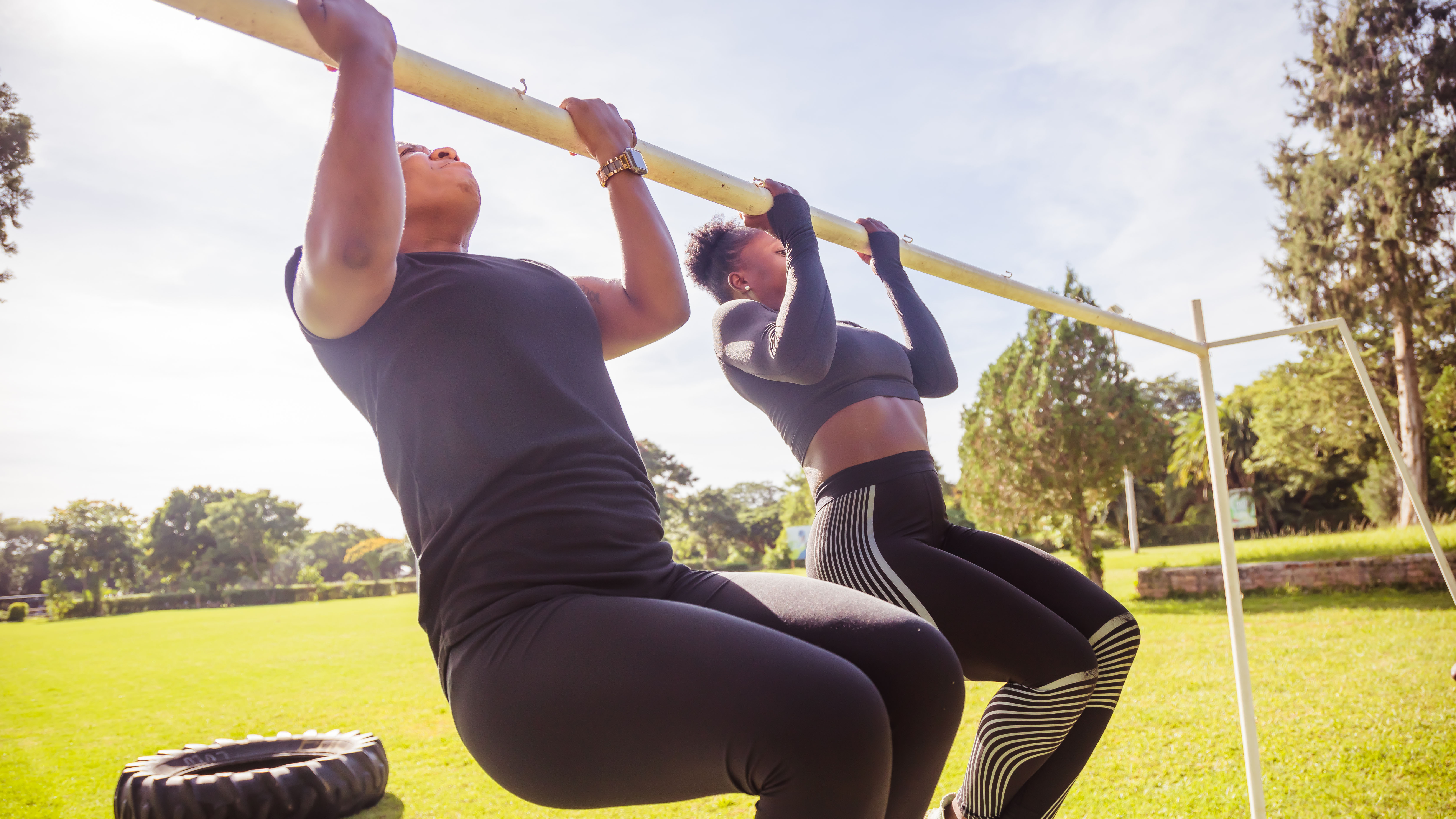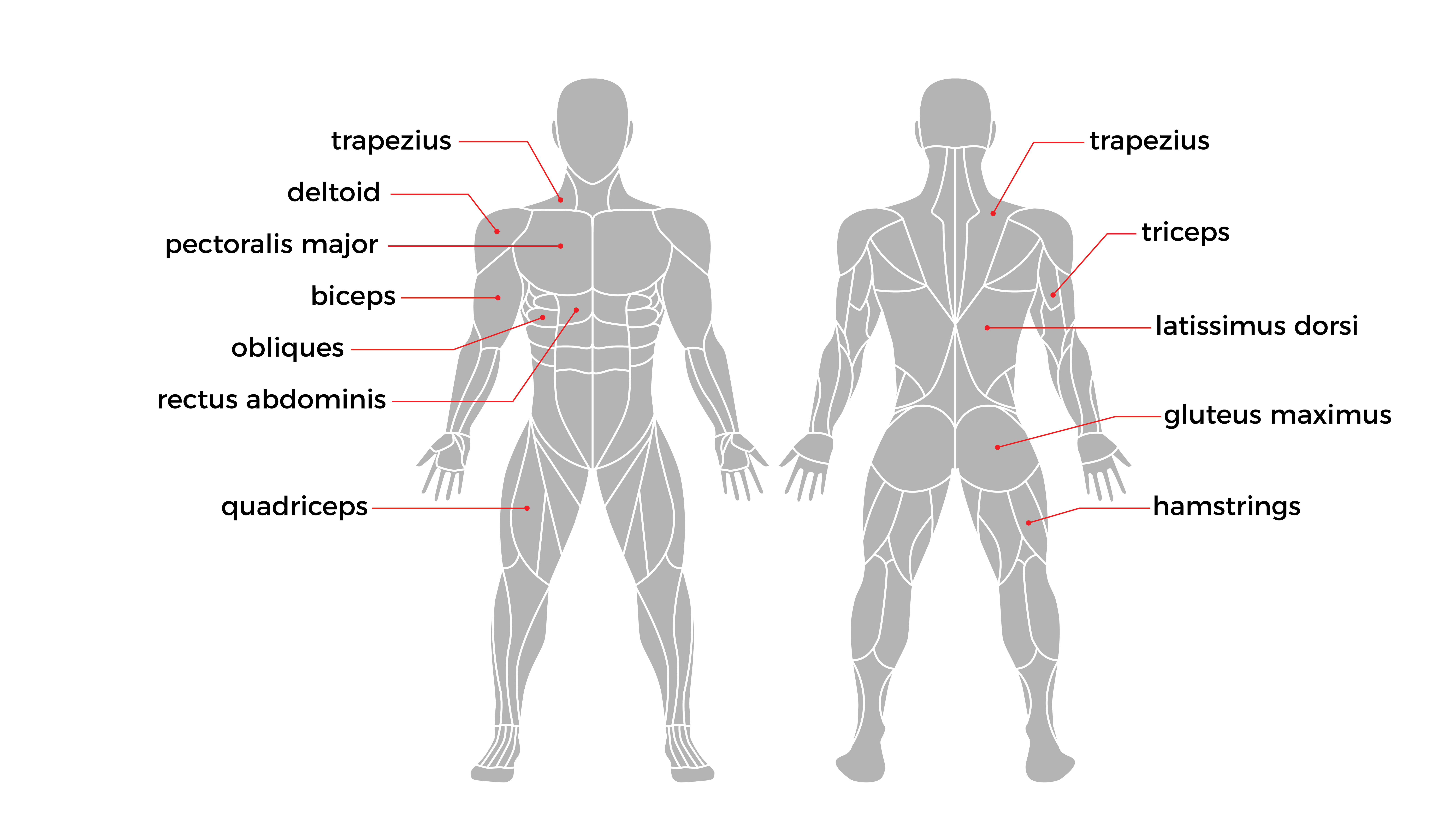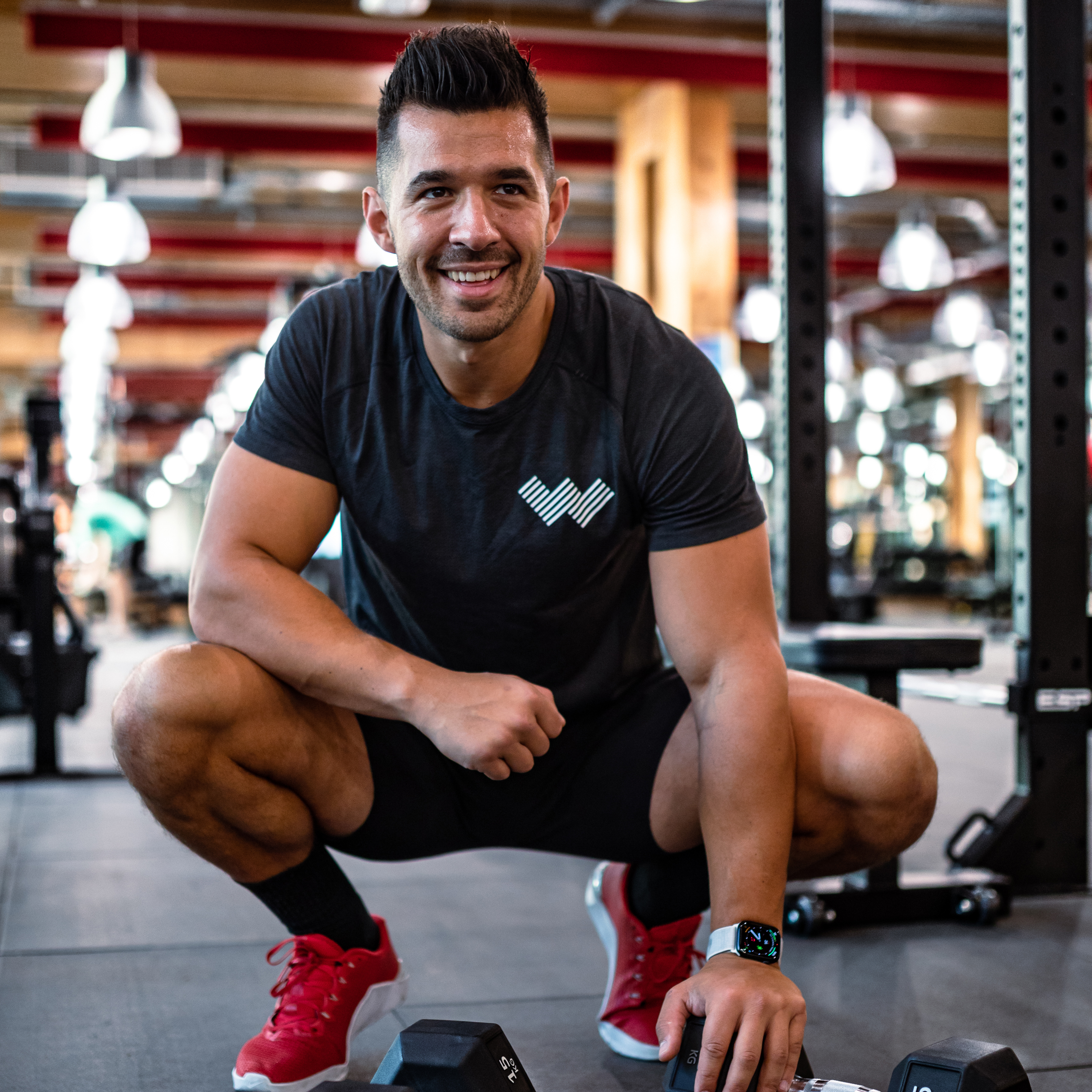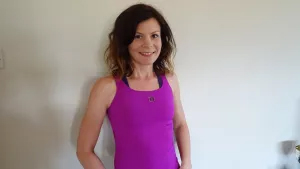Which muscles do pull-ups work?
Being able to do a pull-up is a common fitness goal but which muscles do pull-ups work and why are they so difficult?

A pull-up is an exercise where you grasp a bar over your head and pull your body off the floor but which muscles do pulls up work? Well, this is an exercise that uses multiple muscle groups – in fact, most of your body is engaged in some way.
Yet if you’re not in tip-top shape, you are going to find pull-ups hard which is why it’s such a popular goal for many gym-goers. By understanding how the exercise works, however, you can set your sights on pulling this off, even if you are a complete beginner.
After all, the key to success is in the approach, both in the training and having a plan in place. Talk to a personal trainer or get yourself acquainted with the best fitness trackers to help you keep a record of your progress and, before you know it, you’ll be making headway.

Lats
Lats (or latissimus dorsi) are among the primary muscles used in a pull-up. They’re a pair of huge muscles across your back and your sides, from the shoulder blades and below, and they work to move your upper arms downwards.
They really fire up when you start to pull your elbows towards the sides of your body, allowing your torso to move upwards. The lats work together with another muscle called terres major which is attached from the shoulder blade to the upper arm.
It has the same function of supporting the downward movement of the arm while stabilizing your shoulder joints. You can work these muscles in isolation with exercises like bent over rows to strengthen them for a pull-up.
Traps & rhomboids
The traps (or trapezius) muscles also make an important contribution in the back. They are in the middle of your back, higher up, reaching out to your shoulders and narrowing up towards your neck in a trapezoid shape.
Get the world’s most fascinating discoveries delivered straight to your inbox.
They work in conjunction with the lats to stabilize your shoulder blades as you perform the pull-up but we should give rhomboids a mention here too. These are behind the traps, helping to stabilize the shoulders, and they really come into their own when you start putting variations into your pull-up as they make rotation and other movements in the shoulder blades more secure.
Numerous other muscles, such as deltoids and rotator cuff (terres minor) are working here too, keeping the shoulder joint strong. Any gym exercises that involve your shoulders such as lateral raisesare going to be good preparation for a pull-up.
Biceps & triceps
The biceps are also working hard in a pull-up. Located at the front of your upper arm, they bring the bend into the elbow that helps the downward arm movement which lifts the body upwards. By contracting (getting shorter) as the bend in the elbow becomes sharper on the way up, they take the body’s weight.
They also need to be able to lengthen and allow the elbow joint to open up – with control – on the way down again and, to do this, they get help from the triceps. The triceps work quite hard on this lower phase so tricep extensions as part of your gym routine are a good idea, while a classic bicep curl will be ideal for strengthening the biceps.
Pecs
Your pectoral muscles (pecs) are across the front of your chest and they get to work in a similar way to those on the back of your body, stabilizing shoulder joints and assisting that movement of upper arm/elbow down to waist. They don’t work as hard as the muscles in your back, but they still play an important role supporting those main workers. Press-ups are perfect for training these muscles in isolation.
Core
As a general note, you cannot do a pull-up with a weak core. Your core muscles (which includes several muscle groups, like the obliques, abdominals and diaphragm) stabilize your spine and keep your posture – you need them to hold your form throughout the exercise.
In fact, there are very few muscles not playing some part in this exercise; forearms will certainly start aching after a few reps, glutes need to be engaged to help stabilize hips and core and so it goes on. A pull-up really is a full-body movement and that’s why it is so hard to do. Above, we’ve just flagged the main muscles activated during the movement, but you’ll find that a lot of other muscles come into play.
- Read more: How to get a stronger core
- Read more: Why do muscles get sore after exercise?
How to do a correct pull-up
We spoke to Faisal Abdalla, coach at WithU Training to discover the best method for a good pull up.
“Pull-ups activate muscle groups including back, chest, shoulders, arms, and core – providing an all-over upper body workout, and can be done using little to no equipment,” he said. “Warming up these muscles before you begin your workout is always recommended with isolated exercises and stretches.”
Depending on your current level and experience, it may be advisable to start with assisted pull-ups to help your body acclimatize to the movement. It will also ensure you perfect the technique, meaning your risk of injury is reduced.

Former celebrity trainer, Faisal Abdalla has years of experience as a master trainer for Nike and Barry’s Bootcamp mean. He was named by the press as one of the top 10 PTs in London and placed in the top 50 fitness personalities across the world, alongside Anthony Joshua, Conor McGregor and Usain Bolt.

Here is Abdalla's step-by-step guide:
- With your palms facing away from you, grip the bar shoulder-width apart and hang from the bar. Your knees should be bent to avoid your feet dragging on the floor.
- Engage your core (tense your stomach) and pull upwards, bringing elbows towards your sides. Focus on the movement, engaging every part of your shoulder and chest. The focus on the movement should momentarily distract you from the muscle strain.
- Control your ascent until your chin pokes above the bar and slowly descend until your arms are back at full extension. In the early stages, set yourself realistic targets. This could be doing a low number at full extension or more reps using the assisted machine in the gym.
Amy Curtis is a personal trainer, Pilates instructor and freelance journalist, based in London. She has worked as a magazine editor for Running and Outdoor Fitness and contributed to fitness websites including run247.com and getsweatgo.com. She specialises in women’s fitness, helping women through different stages of their life, from pregnancy to post-natal to menopause. She also works with runners, in particular using Pilates to help build strength for training. Amy is a keen runner herself, and has covered distances from 5km to ultra-marathon.



